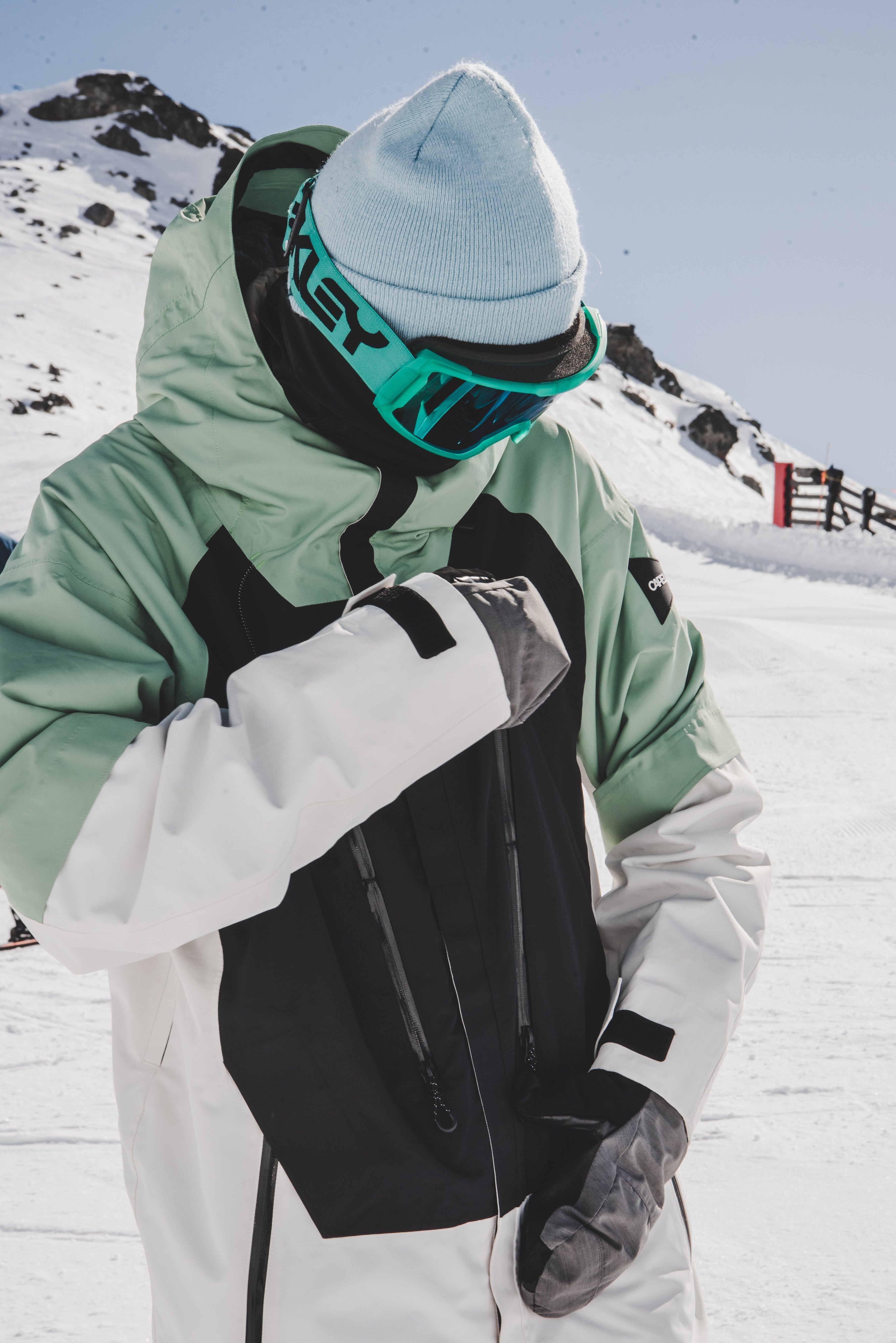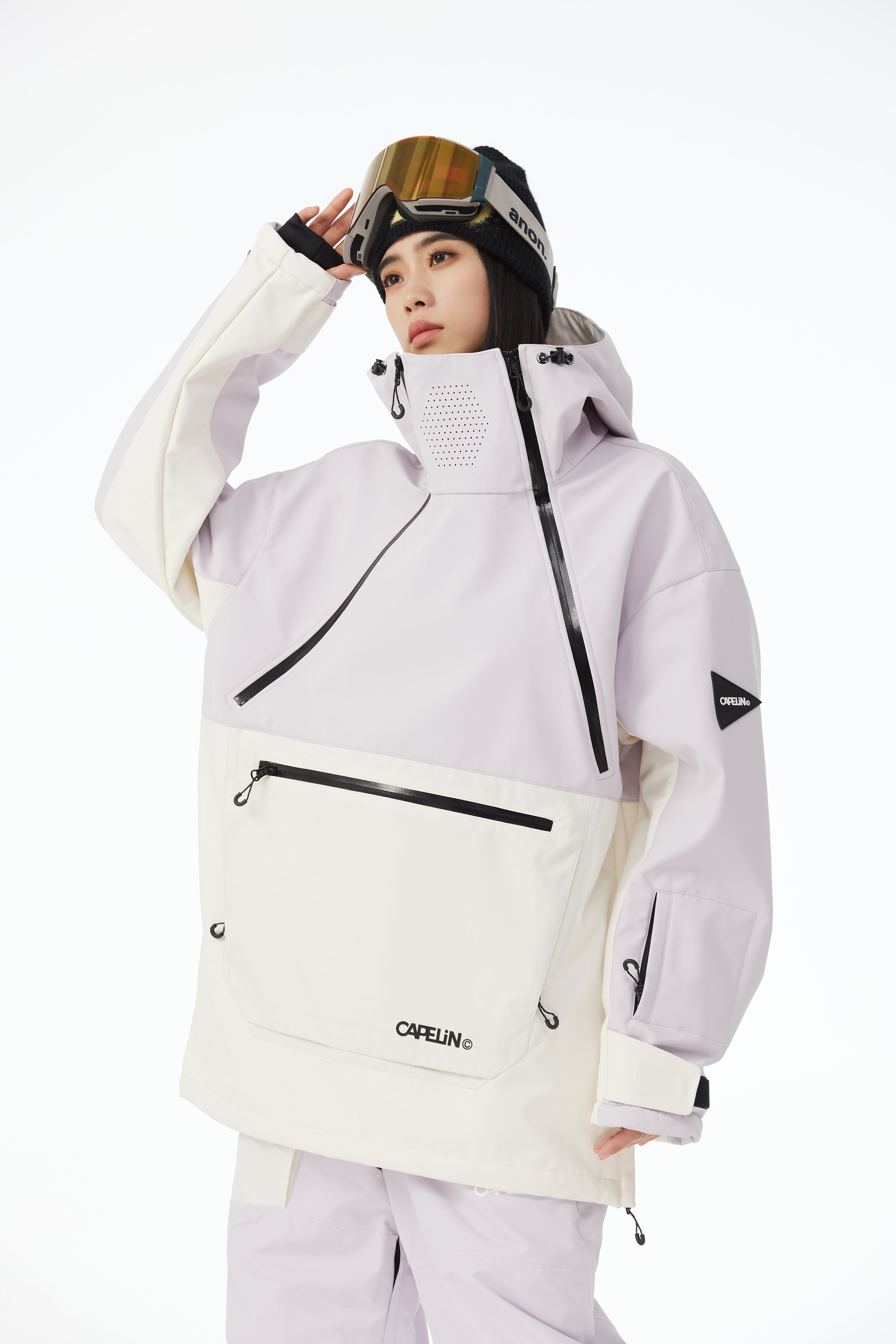A well-designed ski jacket is engineered to keep you dry, whether you're carving through fresh powder or braving a heavy snowstorm. Its waterproof construction is meant to repel moisture, preventing it from seeping through and compromising your insulation layers.
However, not all ski jackets are created equal regarding their waterproofing capabilities. Various factors, including the quality of materials, construction techniques, and proper maintenance, can significantly impact a jacket's ability to keep you dry and comfortable on the slopes.
What does "waterproof" mean?
The term "waterproof" is often used to describe a material or garment's ability to resist the penetration of water. In the context of outdoor apparel, a waterproof jacket is designed to prevent liquid water from passing through its fabric and inner layers.
Moreover, industry standards, such as those set by organizations like the American Association of Textile Chemists and Colorists (AATCC), define specific testing methods and performance criteria for waterproofness.
Differences between waterproof and water-resistant:
It's important to distinguish between waterproof and water-resistant materials. Water-resistant fabrics are designed to repel light moisture or brief exposure to water, but they are not fully impermeable. Waterproof materials, on the other hand, are engineered to create a complete barrier against liquid water, preventing it from penetrating through the material, even under sustained exposure or pressure.
Waterproofing technologies for ski jackets
Durable Water Repellent (DWR) coatings: Many ski jackets feature a Durable Water Repellent (DWR) coating on the outer fabric. This treatment causes water to bead up and roll off the surface, providing an initial line of defense against moisture. However, DWR coatings are not fully waterproof and can wear off over time, requiring reapplication.
Membranes (e.g., Gore-Tex, eVent, Omni-Tech): To achieve true waterproofness, ski jackets often incorporate a waterproof and breathable membrane layer, such as Gore-Tex, eVent, or Omni-Tech. These microporous membranes are designed to allow water vapor (perspiration) to escape while preventing liquid water from entering, keeping you dry from both the outside and inside.
Seam sealing and construction techniques: Even waterproof fabrics and membranes can be compromised if the seams and construction are not properly sealed. High-quality ski jackets undergo a seam-sealing process, where the stitched areas are sealed with waterproof taping or sealants, preventing water from seeping through potential entry points.
Factors Affecting Waterproofness
Quality and type of waterproofing technology
High-end vs. budget jackets: The quality of waterproofing in ski jackets can vary significantly depending on the price point. High-end jackets from reputable brands typically employ premium waterproofing technologies. Budget jackets, on the other hand, may use lower-quality materials and simpler waterproofing methods.
Breathability vs. waterproofness trade-off: There is often a trade-off between breathability and waterproofness in ski jackets. While waterproof membranes prevent liquid water from entering, they also need to allow perspiration and water vapor to escape to maintain breathability and comfort. Jackets with higher breathability ratings may sacrifice some waterproofness, while those with maximum waterproofness may feel less breathable during intense physical activity.
Proper care and maintenance
Washing and re-applying DWR coatings: Regular washing and proper care are essential for maintaining a ski jacket's waterproofness. Over time, the Durable Water Repellent (DWR) coating on the outer fabric can wear off, reducing its water-beading ability. Following the manufacturer's instructions for washing and re-applying a DWR treatment can help restore the jacket's initial water-repellent properties.
Avoiding abrasion and wear: Abrasion and wear can also compromise a ski jacket's waterproofness. Repeated rubbing against rough surfaces or exposure to sharp objects can damage the outer fabric and potentially compromise the integrity of the waterproof membrane or seam sealing. Proper care and handling, such as avoiding dragging the jacket over abrasive surfaces.
Environmental conditions
Heavy rain, wet snow, or powder: The type of precipitation can greatly impact a ski jacket's waterproofness. Heavy, sustained rain or wet, slushy snow can put more pressure on the jacket's waterproofing capabilities than light, dry powder. Jackets designed for extreme conditions may be better equipped to handle these challenges, while those intended for milder weather may struggle to keep you dry in more demanding environments.
Temperature and humidity: Temperature and humidity levels can also affect a ski jacket's waterproofness. Colder temperatures can cause moisture to freeze and potentially compromise the breathability of waterproof membranes, leading to condensation buildup inside the jacket. On the other hand, warmer temperatures and high humidity can challenge the jacket's ability to expel perspiration, potentially causing discomfort and dampness.
Choosing the Right Ski Jacket
Determining your needs and usage
Resort skiing vs. backcountry touring: The type of skiing or snowboarding you'll be doing can influence the level of waterproofness you need in a jacket. Resort skiing, where you'll primarily be on groomed runs and using chair lifts, may not require the same level of protection as backcountry touring, which involves more exposure to the elements and potentially harsher conditions.
Climate and weather conditions: Consider the typical weather patterns and temperature ranges of the areas where you'll be skiing or riding. Regions with heavy snowfall, frequent precipitation, or high humidity may necessitate a jacket with superior waterproofing capabilities, while drier climates may allow for a slightly less robust option.
Evaluating waterproofing ratings and features
Waterproof membrane specifications: When shopping for a ski jacket, pay close attention to the waterproof membrane specifications. Look for reputable brands and technologies like Gore-Tex, eVent, or Omni-Tech, and check the waterproof rating, which is typically measured in millimeters (mm) of water column resistance. Higher ratings generally indicate better waterproofness.
Seam sealing and construction details: Examine the jacket's construction details, particularly the seam sealing. High-quality jackets will have fully taped or sealed seams, preventing water from seeping through potential entry points. Additionally, look for features like waterproof zippers and reinforced areas that enhance overall waterproofness.
Considering Additional features
Pit zips and venting: While not directly related to waterproofness, pit zips and venting systems can help regulate body temperature and prevent excessive perspiration buildup, which can compromise the jacket's waterproofing from the inside.
Powder skirts and adjustable cuffs: Powder skirts and adjustable cuffs are designed to seal out snow and moisture, preventing it from entering through the jacket's openings. These features can further enhance the overall waterproofness and protection offered by the jacket.
Conclusion
Proper care and maintenance, including washing, reproofing, and storage techniques, can help extend the life of your ski jacket's waterproofing capabilities. Ultimately, a well-designed and properly maintained waterproof ski jacket can provide the protection and peace of mind you need to focus on the thrill of the slopes, regardless of the weather conditions.
FAQ
Q: After wearing my ski jacket sometimes, how should I take care of it to maintain its waterproof performance?
A: To maintain the waterproof performance as much as possible, one must wash his/her ski jacket properly. In short, use cold water and dryer to dry the clothes in order to keep its original performance.












